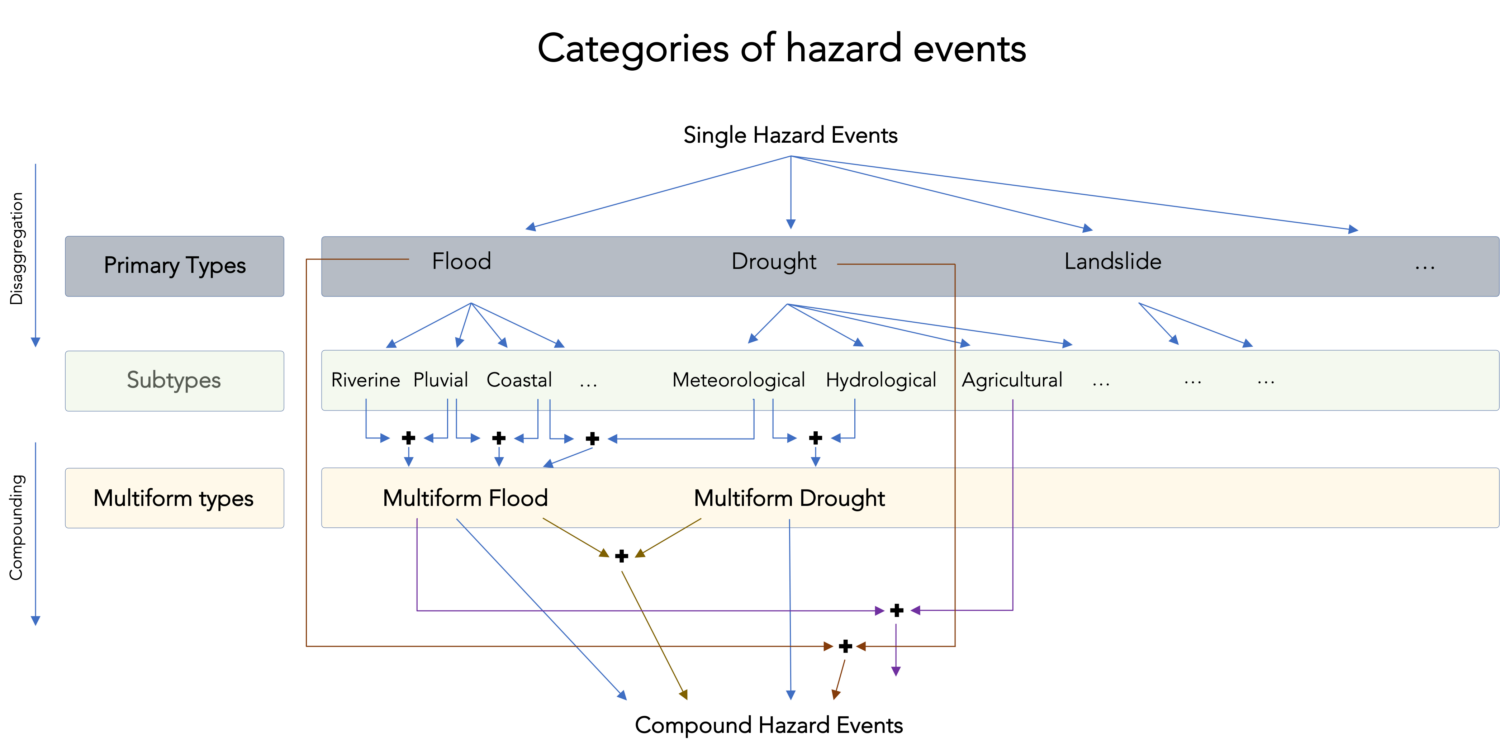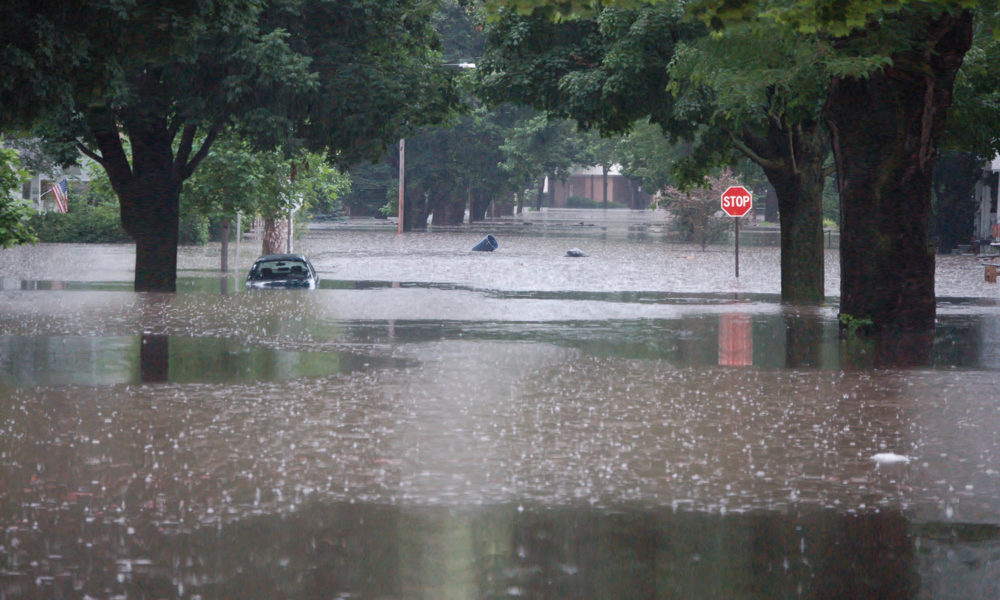We are in the thick of “danger season” (aka summer), that time of year when climate-related disasters such as droughts, heat waves, wildfires, floods and hurricanes are more likely to happen. Not only that, but climate change has made many of these disasters more severe and more likely to occur.
Just in 2022 we have seen flooding in the U.S. and across the world that can be characterized as multiform. For instance, in Kentucky, heavy rain caused a flash flood in July, and as rain continued it swelled creeks causing them to overflow, inundating whole sections of towns, destroying roads and bridges, and impacting disaster response and recovery over a much longer period than a flash flood alone would.
It is not surprising that most flood types are connected with heavy precipitation, the main cause of floods. With heavy precipitation projected to increase with climate change, the stage is set for more flooding, and more flood subtypes.
Compound risks, compound impacts
We know multiple disasters and their impacts can happen in succession or even simultaneously—a common one is a hurricane hitting and cutting power during a heat wave, or an extreme precipitation event during an ongoing tidal flood making it even worse—compounding impacts and hazards for the communities exposed to them. We are used to thinking about these compounding events as being formed by discrete types of disasters, but what about when different variations of the same disaster hit simultaneously?
Multiform flood events—you can think of them as compound flood events—are exactly that: when different types of floods—caused by rain, overflowing rivers, storm surge, tidal flooding, and/or ice melt—happen simultaneously or in rapid succession.
Usually, we don’t talk much about multiform events, although they happen often enough. According to an article by the American Geophysical Union, the number of these compound events has been on the increase, but the understanding of processes involved is still lacking. They highlight hurricane-driven floods, when the focus on hurricane intensity “overlooks potential rainfall and inland flooding impacts, leaving hurricane initial forecasts short of vital information about hazards and risks to people and infrastructure.”
A flood is a flood is a flood? Not quite.
A flood is not a simple concept—it’s not just water rising and flooding an area. A paper I co-authored that was recently published in the peer-reviewed journal Environmental Research Letters highlights the fact that not only there are different forms of flood, but they also have very different physical and socioeconomic impacts and implications for affected communities, especially when they interact.
The article points out that a “flood” is a primary hazard type, which has various subtypes such as a river flood, coastal flood, flash flood, etc. (see figure from paper below). Each of these subtypes requires different approaches to reduce risk, build resilience, adapt and prepare for future events, and implement effective policy solutions. In addition, many flooding events are being made more intense or more likely to occur because of climate change, and there is a need to take into consideration future projections when addressing preparedness. Some subtypes of floods are well-understood, and their impacts are addressed through policies and emergency management procedures, but that is not true for all subtypes—or for all types of interactions.

Flood subtypes can not only interact with each other but also with other types of hazards, and bundling everything under “flood” as the disaster type leads to challenges and potential consequences for risk assessment, preparedness, and policy solutions, with impacts on the humanitarian response and economic sectors globally. Specifically, the impacts of multiform floods may interact in ways that had not previously been considered, leading to inadequate response and management—particularly for vulnerable populations.
In the paper we mention the example of Hurricane Florence in 2018, when communities in the North Carolina coast evacuated inland to avoid the coastal flooding, only to find themselves facing compound inland flooding from overflowing rivers and extreme rainfall. The concept of multiform flood and related emergency preparations would have been useful in that situation, as well as in various other events around the world.
Preparedness for multiform floods is lacking
Multiform flood events have been historically neglected in the preparedness space thus far. To better understand and address multiform floods, there needs to be more research on risk, vulnerability, and exposure for each subtype of flood, so that government programs that aim to limit risk and build resilience are adequately prepared for the added challenge of compound impacts.
Risk management models must track and disclose the specific subtypes of floods they address, what assumptions were incorporated (such as rates of flow and hydrological features), and what was excluded (such as pre-existing mitigating measures).
In addition, understanding how various subtypes of floods can interact with each other at various geographic and temporal scales is essential to assess cascading and indirect impacts so as to disclose and communicate risk in a more actionable way for preparedness, response, and policymaking.
The article’s recommendations to improve assessment and preparedness, as well as cascading impacts of multiform floods are summarized in the figure below:

Knowing the risks, preparing for impacts
As climate change is poised to make flooding more frequent, extensive, and destructive, it is essential that communities know their risk and that local, state and national government agencies have the data and science to understand the risk, the policies in place to mitigate that risk and outreach to help communicate the risk.
The immediate impacts of a multiform flood event can be devastating, and its socioeconomic reverberations can travel far, impact from daily lives of households and vulnerable communities, to disrupting disaster response, to impacting real estate and financial markets. Of course, reducing emissions that cause global warming in the first place is our best bet to avoid the worst of future climate-driven flooding and other disasters.
In the meantime, understanding the science and impacts of multiform floods can inform policy makers and ensure the needed resources are available to help emergency managers plan and communicate risks so that their communities are better prepared for not only what is already happening, but also for a future altered by climate change.

